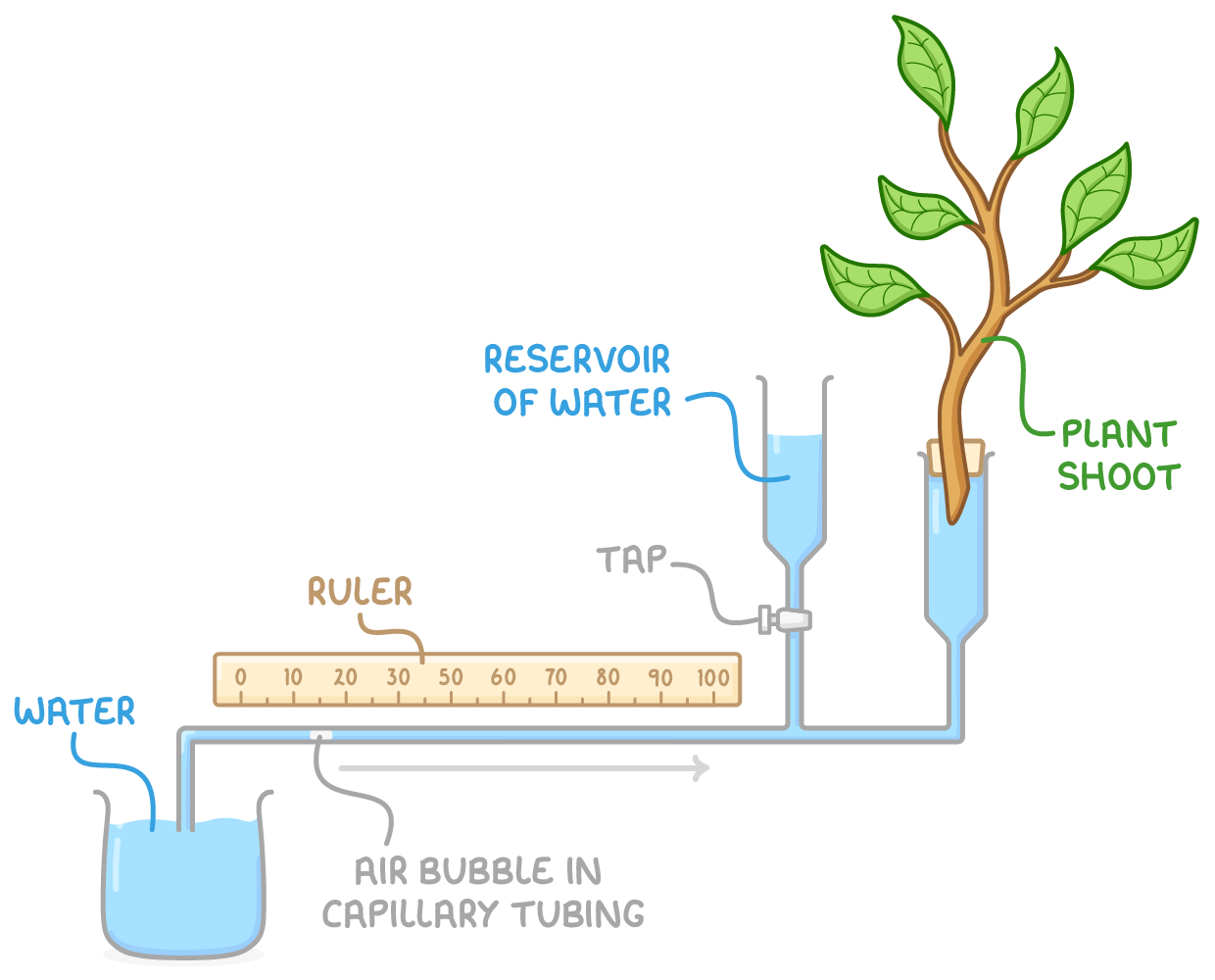Transpiration
This lesson covers:
- How transpiration relates to gas exchange
- Factors affecting transpiration rate
- Using a potometer to estimate transpiration rate
Transpiration and gas exchange
Transpiration is the evaporation of water from aerial parts of plants, especially leaves.
Why transpiration occurs:
- Stomata open so they can absorb CO2 for photosynthesis.
- This provides a pathway for water loss through the open stomata.
- Water vapour moves down a water potential gradient from the air spaces in the leaf into the atmosphere.
So, transpiration is a side effect of gas exchange.
Factors affecting the transpiration rate
Four main factors affect the transpiration rate: light intensity, temperature, humidity, and wind speed.
These factors affect the transpiration rate as follows:
- Light intensity - At high light intensities, stomata open for maximum CO2 absorption for photosynthesis, increasing the transpiration rate.
- Temperature - At high temperatures, evaporation of water molecules is faster due to higher kinetic energy, increasing the transpiration rate.
- Humidity - Low humidity increases the water vapour gradient between the leaf and atmosphere, increasing the transpiration rate.
- Wind speed - High wind speeds increase the water vapour gradient between the leaf and atmosphere, increasing the transpiration rate.
Using a potometer
A potometer is used to measure the rate of transpiration.

Steps in using a potometer:
- Cut the shoot underwater at slant to increase the surface area for water uptake.
- Assemble the potometer with the shoot submerged in water.
- Keep the capillary tube end of the potometer submerged throughout the experiment.
- Check that the apparatus is airtight.
- Dry the leaves, and give the shoot time to acclimatise.
- Shut the tap, form an air bubble and record its position.
- Measure the distance the air bubble moves and the time taken.
- Change one variable at a time and keep everything else constant.
Calculating the rate of transpiration
To calculate the rate of transpiration, we first need to calculate the volume of water that has been taken up by the plant to estimate how much has been lost from the plant over this time period. Then we need to turn this value into a rate.
We can do this as follows:
- Calculate the cross-sectional area of the capillary tube (this is the area of the circle that forms a cross section of the tube):
surface area of a circle =πr2
- Calculate the volume of water uptake by multiplying the value from step 1 by the distance the air bubble travelled, 'd' (that is, calculate the area of the cylinder of water that has been taken up by the plant):
volume of water uptake =πr2× d
- Calculate the rate of water uptake (an estimate for the rate of transpiration) by dividing the value calculated in step 2 by the time taken:
rate of transpiration =time takenvolume of water uptake